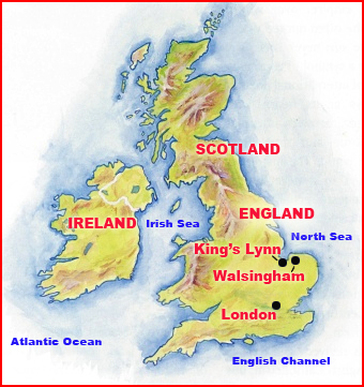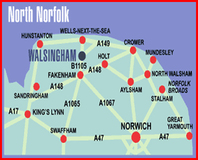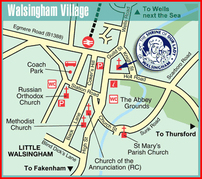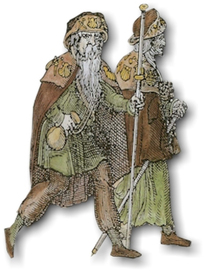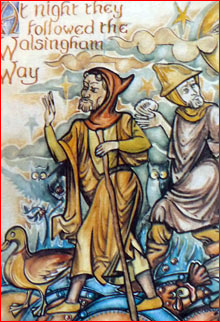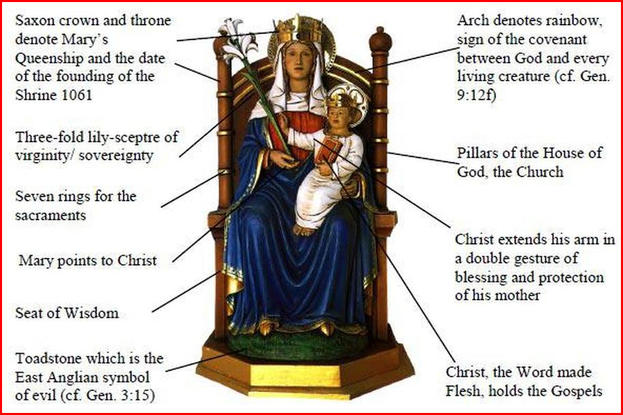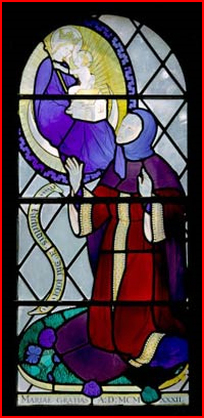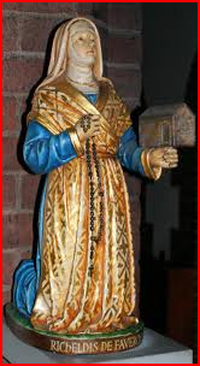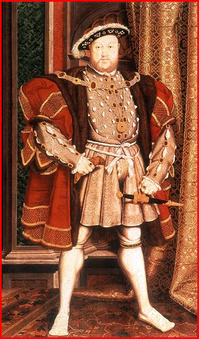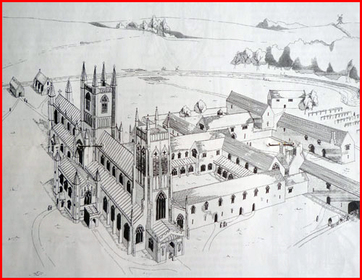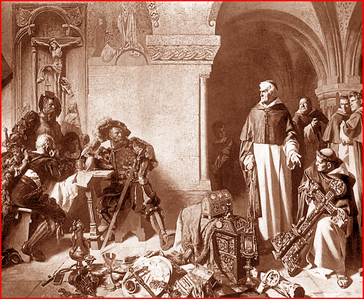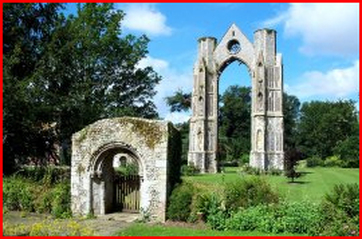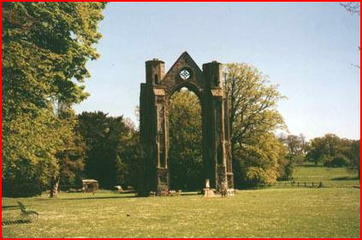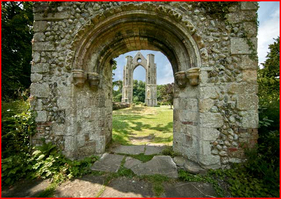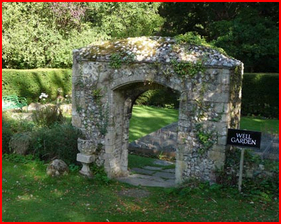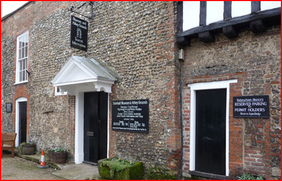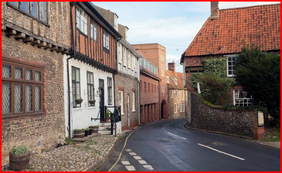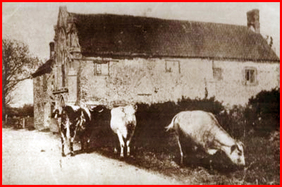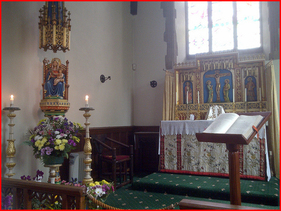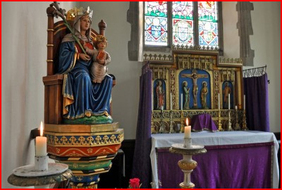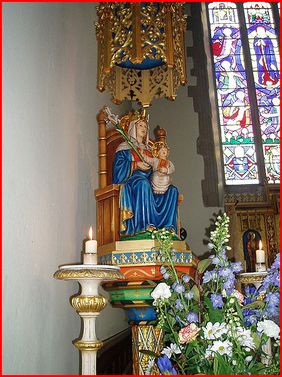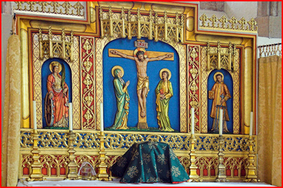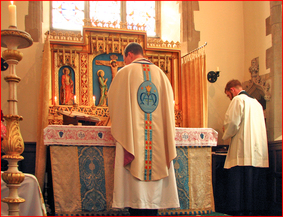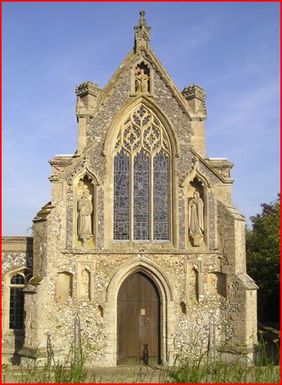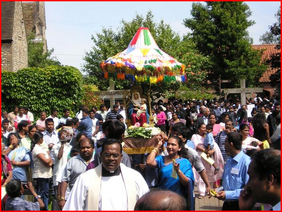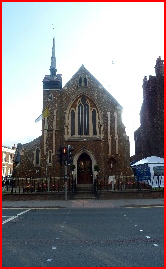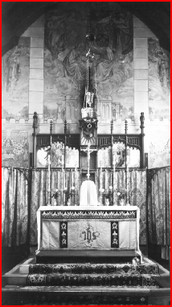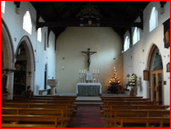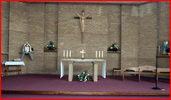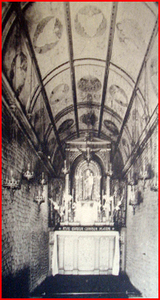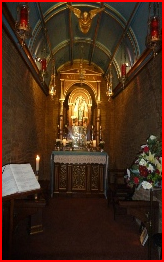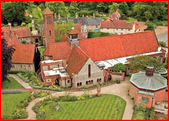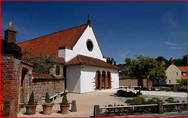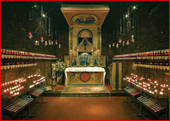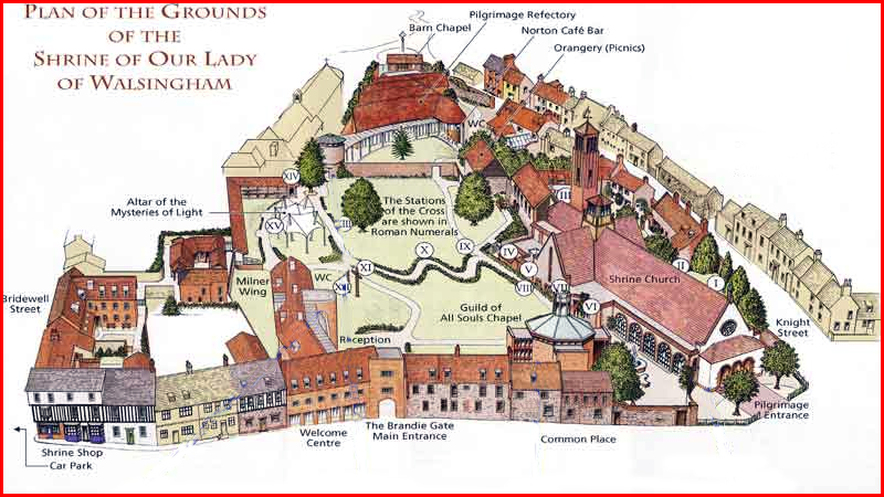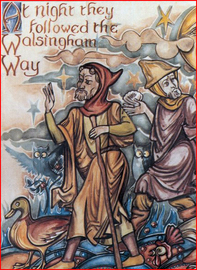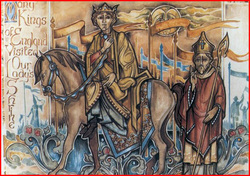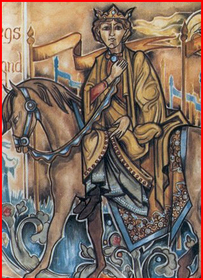| Devotion to Our Lady |
|
- Homepage
-
Daily Thoughts
- 2023 October Daily Thoughts
- Daily Thoughts Lent 2020
- Daily Thoughts for Advent 2019
- Daily Thoughts for October 2019
- Daily Thoughts for September 2019
- Daily Thoughts for August 2019
- Daily Thoughts for July
- Daily Thoughts for June
- Daily Thoughts for Easter 2019
- Daily Thoughts for Lent 2019
- Daily Thoughts for Christmas
- Daily Thoughts Easter 2022
- Sacred Heart
- Holy Ghost
-
Spiritual Life
- Holy Mass Explained
- First Friday Devotions
- First Saturday Devotions
- The Mercy of God
- Vocations
- The Path Everyone Must Walk >
- Gift of Failure
- Halloween or Hell-O-Ween?
- Ignatian Spiritual Exercises >
- Meditation is Soul-Saving
- Spiritual Communion
- Miraculous Medal
- Enrollment in Miraculous Medal
- St. Benedict Medal
- Holy Water
- Advice on Prayer
- Your Daily Mary
-
Prayers
- September Devotions
- Seven Sorrows of Our Lady
-
Novenas
>
- NV-Help of Christians
- NV-Nativity of Our Lady
- NV-Seven Sorrows
- NV- Sorrowful Heart
- NV-Pope St Pius X
- NV-La Salette
- NV-St Michael Archangel
- NV-Immaculate Heart
- NV-Assumption
- NV-Novena for Fathers
- NV-Novena for Your Mother
- NV-St Raphael Archangel
- NV-Souls in Purgatory
- NV-All Saints Day
- NV-Christ the King
- NV-Divine Motherhood
- NV-Guardian Angels
- NV-Rosary
- NV-Mirac Med
- NV- Imm Conc
- NV - Guadalupe
- NV - Nativity of Jesus
- NV-Epiphany
- NV-OL Good Success
- NV-Lourdes
- NV-St Patrick
- NV-St Joseph
- NV-Annunciation
- NV-St Louis de Montfort
- NV-OL Good Counsel
- NV-Last Supper
- NV-Passion
- NV-Pentecost
- NV-Ascension
- NV-Sacred Heart
- NV-Sacred Heart & Perpetual Help
- NV-Corpus Christi
- NV-OL of Perpetual Help
- NV-Queenship BVM
- NV-OL of Mount Carmel
- NV-St Mary Magdalen
- NV- Im Hrt
- August Devotions to IHM
- Immaculate Heart of Mary
- Litany of Dependence
- Prayers to St Mary Magdalen
- Prayers in Times of Sickness Disease & Danger
- Holy Souls in Purgatory
- Meditations on the Litany of Our Lady
- Special Feast Days
- Prayers to Mary (Mon-Sun)
- Litanies to Our Lady >
- Various & Special Needs
- Our Lady of the Rosary
- Our Lady of Mt. Carmel
- Our Lady of Perpetual Help
- Our Lady of Guadalupe
- Other titles of Our Lady
-
Rosary
- Downloads
- Consecration
- Easter Season
-
Holy Week
- Last Seven Words of Jesus >
- Characters of Passion >
- The Last Days of Christ
- Before Palm Sunday
- Palm Sunday
- Monday in Holy Week
- Tuesday in Holy Week
- Wednesday in Holy Week
- Holy Thursday (Last Supper)
- Holy Thursday (Agony & Arrest)
- Night Vigil with Christ
- Good Friday (Pilate & Herod)
- Good Friday (Way of Cross & Crucifixion)
- Saturday in Holy Week
-
Lent
- Ideas for Lent
- Daily Lenten Planner
- Daily Lenten Liturgy
- From Cold to Hot
- Lent with Aquinas
- Lent with Dom Gueranger
- Virtues for Lent
- History of Penance
- How Expensive is Sin?
- Confession of Sins
- Letter to Friends of the Cross
- Sermons for Lent
- Stations of the Cross >
- Lenten Prayers
- 7 Penitential Psalms
- Lenten Psalms SUN
- Lenten Psalms MON
- Lenten Psalms TUE
- Lenten Psalms WED
- Lenten Psalms THU
- Lenten Psalms FRI
- Lenten Psalms SAT
- Lenten Laughs
- Septuagesima
-
Christmas
- Epiphany Explained
- Suggestions for Christmas
- Food For Thought
- Christmas with Aquinas
- Christmas with Dom Gueranger
- Christmas Prayers
- Candles & Candlemas
- Christmas Sermons
- Christmas Prayers SUN
- Christmas Prayers MON
- Christmas Prayers TUE
- Christmas Prayers WED
- Christmas Prayers THU
- Christmas Prayers FRI
- Christmas Prayers SAT
- Twelve Days of Christmas >
-
Advent Journey
- Purgatory
- Christ the King
- Legion of Mary
- Scapular
-
Saints
-
Martyrs for the Faith
>
- Your Daily Martyr >
- All 365 Days of Martyrs
- Cristeros
- St Valentine & Valentine's Day
- Martyrs--Thomas Becket
- Martyrs--John the Apostle
- Holy Machabees
- Age of Martyrdom
- Carmelites of Compiegne
- Martyrs--Peter & Paul
- Martyrs--John the Baptist
- Martyrs--Andrew
- Martyrs--James the Great
- Martyrs--North American
- Martyrs--Seven Holy Sleepers
- Martyrs--Afra
- School of Martyrdom
- Martyrs--Christina
- Desert Saints >
- Saints for Sinners >
- Saints of Mary >
- History of All Saints Day
-
Martyrs for the Faith
>
- Precious Blood
- Synod 2023
-
Catechism
- Catechism Lesson 1
- Catechism Lesson 2
- Catechism Lesson 3
- Catechism Lesson 4
- Catechism Lesson 5
- Catechism Lesson 6
- Catechism Lesson 7
- Catechism Lesson 8
- Catechism Lesson 9
- Catechism Lesson 10
- Catechism Lesson 11
- Catechism Lesson 12
- Catechism Lesson 13
- Catechism Lesson 14
- Catechism Lesson 15
- Catechism Lesson 16
- Catechism Lesson 17
- Catechism Lesson 18
- Catechism Lesson 19
- Catechism Lesson 20
- Catechism Lesson 21
- Catechism Lesson 22
- Bible Study
-
Calendar
- Miracles
- Apparitions
- Shrines
- Prophecies
- Angels Homepage
- Hell
-
Church Crisis
- Conspiracy Theories
- Amazon Synod 2019 >
- Liberalism & Modernism
- Modernism--Encyclical Pascendi
- Modernism & Children
- Modernism--Documents
- The Francis Pages
- Church Enemies on Francis
- Francis Quotes
- Amoris Laetitia Critique
- Danger of Ignorance (Pius X)
- Restore all In Christ (Pius X)
- Catholic Action (Pius X)
- Another TITANIC Disaster?
- The "Errors of Russia"
- CRISIS PRAYERS
- Election Novena 2024
- The Anger Room
- War Zone
- Life of Mary
- Spiritual Gym
- Stupidity
- Coronavirus and Catholicism
- History & Facts
- Books
- Catholic Family
- Children
- Daily Quiz
-
Novena Church & Pope
- Day 01 Church-Pope Novena
- Day 02 Church-Pope Novena
- Day 03 Church-Pope Novena
- Day 04 Church-Pope Novena
- Day 05 Church-Pope Novena
- Day 06 Church-Pope Novena
- Day 07 Church-Pope Novena
- Day 08 Church-Pope Novena
- Day 09 Church-Pope Novena
- Day 10 Church-Pope Novena
- Day 11 Church-Pope Novena
- Day 12 Church-Pope Novena
- Day 13 Church-Pope Novena
- Day 14 Church-Pope Novena
- Day 15 Church-Pope Novena
- Day 16 Church-Pope Novena
- Day 17 Church-Pope Novena
- Day 18 Church-Pope Novena
- Day 19 Church-Pope Novena
- Day 20 Church-Pope Novena
- Day 21 Church-Pope Novena
- Day 22 Church-Pope Novena
- Day 23 Church-Pope Novena
- Day 24 Church-Pope Novena
- Day 25 Church-Pope Novena
- Day 26 Church-Pope Novena
- Day 27 Church-Pope Novena
- Day 28 Church-Pope Novena
- Day 29 Church-Pope Novena
- Day 30 Church-Pope Novena
- Day 31 Church-Pope Novena
- Day 32 Church-Pope Novena
- Day 33 Church-Pope Novena
- Day 34 Church-Pope Novena
- Day 35 Church-Pope Novena
- Day 36 Church-Pope Novena
- Day 37 Church-Pope Novena
- Day 38 Church-Pope Novena
- Day 39 Church-Pope Novena
- Day 40 Church-Pope Novena
- Day 41 Church-Pope Novena
- Day 42 Church-Pope Novena
- Day 43 Church-Pope Novena
- Day 44 Church-Pope Novena
- Day 45 Church-Pope Novena
- Day 46 Church-Pope Novena
- Day 47 Church-Pope Novena
- Day 48 Church-Pope Novena
- Day 49 Church-Pope Novena
- Day 50 Church-Pope Novena
- Day 51 Church-Pope Novena
- Day 52 Church-Pope Novena
- Day 53 Church-Pope Novena
- Day 54 Church-Pope Novena
- Penance Novena
- Daily WeAtheR Forecast
TO VISIT A SHRINE
click on the shrine you would like to view
| Bethlehem | Nazareth | Lanciano | Lourdes | La Salette | Fatima | Guadalupe | Walsingham | Mount Carmel |
| Our Lady of Perpetual Help | St. Patrick's Purgatory |
click on the shrine you would like to view
| Bethlehem | Nazareth | Lanciano | Lourdes | La Salette | Fatima | Guadalupe | Walsingham | Mount Carmel |
| Our Lady of Perpetual Help | St. Patrick's Purgatory |
The feast of Our Lady of Walsingham used to be celebrated on March 25th; it is now celebrated on September 24th
THE "MAKE-DO" CATHOLIC SHRINE OF OUR LADY OF WALSINGHAM IN NEARBY KING'S LYNN
King's Lynn is located around 26 miles east-south-east of Walsingham. The first church of St. Mary built on the present site was designed by A.W. Pugin and opened in 1845. When Father George Wrigglesworth came to the King’s Lynn Mission in 1887 the church, having been built on poor foundations, had deteriorated to such and extent that urgent action was needed. Every effort was made to carry out satisfactory repairs but it eventually became clear that more drastic action was required.
|
In 1888 Bishop Riddell of Northampton decided that the church should be demolished and a new one built. A subscription list was started and a public appeal was launched through the Catholic papers and magazines. Fr George Wrigglesworth and his small congregation (about 90 at the time drawn from the whole of North West Norfolk) had great difficulty raising the necessary funds. Bishop Riddell laid the foundation stone on the 29th September 1896.
The Prince of Wales (later King Edward VII (7th) had drawn Fr Wrigglesworth’s attention to the discomfort suffered by royal guests at Sandringham when attending Mass in King’s Lynn. Learning of the necessity of building a new church, the Prince gave fifty guineas towards the building fund and the Kings of Spain and Italy also made donations. The church was opened for worship on the 2nd June 1897. When the Catholic priest, Father George Wrigglesworth, came to the King’s Lynn Mission, in 1887, he became keen to revive devotion to Our Lady of Walsingham. With the help of Father Philip Fletcher, co-founder of the Guild of Our Lady of Ransom, he petitioned Pope Leo XIII to incorporate a restored shrine to Our Lady of Walsingham (the replica of the Holy House of Nazareth) in the Catholic church at Lynn. His Holiness gladly assented and granted a Rescript on the 6th February 1897, restoring the ancient Shrine of Our Lady of Walsingham at King’s Lynn. The Shrine Chapel is a reproduction, on a reduced scale, of the Holy House in Nazareth at Loreto. The altar, too is a copy of that at Loreto. Until the 1960's the Shrine was lit by fifteen hanging lamps representing the Mysteries of the Rosary and the ceiling was painted to depict them. Since the likeness of the original Walsingham statue was not known at the time, the Pope directed that a new statue be copied from the picture of Our Lady venerated in the Roman Church of Santa Maria in Cosmedin, the titular church of Cardinal Pole, who died in 1556, the last Catholic Archbishop of Canterbury. The statue was carved in wood at Oberammergau, and having been blessed by the Pope on the day the Rescript for the Shrine was granted, it was brought to King’s Lynn on the 19th August 1897. Not only were the Catholics of Lynn and district at the railway station to receive the statue, many had come from all parts of England ant the whole route to the new church was lined by the people of Lynn, who were reported to be very respectful, even reverent. A halt was made at the Red Mount Chapel (built in 1485) in the Walks were the people saluted Our Lady’s return with the Salve Regina. An annual procession to the Red Mount commemorating this event continued until 1984. On the following day, 20th August 1897, the first public pilgrimage to Walsingham since the Reformation took place, led by Father Philip Fletcher and Fr George Wrigglesworth. There was a procession from Walsingham railway station to the Slipper Chapel where prayer were offered and visits were made to the Priory Ruins. The Guild of Our Lady of Ransom continued to lead pilgrimages to King’s Lynn until 1934 when it was at last possible to restore the National Shrine to the Slipper Chapel at Walsingham. Pilgrims continued to visit the Shrine in King’s Lynn. In the 1060s when the church was renovated, the Shrine was simplified and the lamps, ceiling paintings and screen removed. |
|
THE ANGLICAN SHRINE IN WALSINGHAM
The Reverend (Alfred) Hope Patten was appointed the Vicar of Walsingham in 1921 and wished to encourage devotion to Our Lady of Walsingham by having a new statue made, based on that depicted on the seal of the medieval Priory. In 1931, a "Holy House" was dedicated, enclosed within a small Church. In 1938, that Church was enlarged to make way for the present Anglican Shrine.
Below is a plan of the grounds and buildings of the Anglican Shrine
|
1. Of this chapell se here the fundacyon,
Bylded the yere of crystes incarnacyon, A thousande complete syxty and one, The tyme of sent Edward kyng of this region. 2. Beholde and se, ye goostly folkes all, Which to this place have devocyon When ye to Our Lady askynge socoure call Desyrynge here hir helpe in your trybulacyon: Of this hir chapell ye may se the fundacyon. If ye wyll this table overse and rede Howe by myracle it was founded indede. 3. A noble wydowe, somtyme lady of this towne, Called Rychold, in lyvynge full vertuous, Desyred of Oure Lady a petycyowne Hir to honoure with some werke bountyous, This blyssed Virgyn and Lady most gracyous Graunted hir petycyon, as I shall after tell, Unto hir worschyp to edefye this chapell. 4. In spyryte Our Lady to Nazareth hir led And shewed hir the place where Gabryel hir grette: "Lo doughter, consyder" to hir Oure Lady sayde, " Of thys place take thou suerly the mette, Another lyke thys at Walsyngham thou sette Unto my laude and synguler honoure; All that me seke there shall fynde socoure, 5. Where shall be hadde in a memoryall The great joy of my salutacyon. Fyrste of my joys grounde and orygynall Rote of mankyndes gracious redempcyon, When Gabryell gave to me relacyon To be a moder through humylyte. And goddys sonne conceyve in virgynyte" 6. This visyon shewed thryse to this devout woman. In mynde well she marked both length and brede; She was full gladde and thanked Oure Lady than Of hir great grace never destytute in nede. This forsayd hous in haste she thought to spede, Called to hir artyfycers full wyse, This chapell to forge as Our Lady dyd devyse. 7. All this, a medewe wete with dropes celestyall And with sylver dewe sent from hye adowne Excepte tho tweyne places chosen above all Where neyther moyster ne dewe myght be fowne. This was the fyrste pronostycacyowne Howe this our newe Nazareth here shold stande, Bylded lyke the fyrste in the Holy Lande. 8. Whan it was al fourmed, than had she great doute Where it shold be sette and in what maner place, Inasmoche as tweyne places were founde oute Tokened with myracle of Our Ladyes grace; That is to say, tweyne quadrates of egall space As the flees of Gedeon in the wete beynge drye, Assygned by myracle of holy mayde Marye. 9. The wydowe thought it most lykly of congruence This house on the fyrste soyle to bylde and arere. Of this who lyste to have experyence, A chapell of saynt Laurence standeth nowe there Faste by tweyne wells, experyence doth thus lere, There she thought to have set this chapell Which was begonne by Our Ladyes counsell. 10. The carpenters began to set the fundamente This hevenly house to arere up on hye, But sone their werkes shewed inconvenyente. For no pece with oder wolde agre with geometrye; Than were they all sory and full of agonye That they could nat ken neither mesure ne marke To ioyne togyder their owne proper werke. 11. They went to reste and layde all thynge on syde, As they on their maystresse had a commaundement; She thought Our Lady, that fyrste was hir gyde, Wold convey this worke aftyr hir owne entent; Hir meyny to reste as for that nyght she sente And prayed Our Lady with devoute exclamacyon, And as she had begonne, to perfowrme that habytacion. |
12. All nyghte the wydowe remayninge in this prayer,
Oure blyssed Lady, with hevenly mynystrys, Hirsylfe beynge here chyef artyfycer, Arerid this sayd house with aungellys handys, And nat only reyrd it but set it there it is, That is, two hundred fote and more in dystaunce From the fyrste place bokes make remembraunce. 13. Erly whan the artyfycers cam to their travayle Of this sayd chapell to have made an ende, They founde eche parte conjoyned sauns fayle Better than they coude conceyve it in mynde; Thus eche man home agayne dyd wynde, And this holy matrone thanked Oure Lady Of hir great grace shewyd here specyally. 14. And syth here Our Lady hath shewyd many myracle Innumerable, nowe here for to expresse To suche as visyte thys hir habytacle. Ever lyke newe to them that call hir in dystrsse. Foure hundreth yere and more the cronacle to witnes Hath endured this notable pylgrymage, Where grace is dayly shewyd to men of every age. 15. Many seke ben here cured by Our Ladyes myghte Dede agayne revyved, of this is no dought, Lame made hole and blynde restored to syghte, Maryners vexed with tempest safe to porte brought Defe, wounded and lunatyke that hyder have sought And also lepers here recovered have be By Oure Ladyes grace of their infyrmyte. 16. Folke that of fendys have had acombraunce And of wycked spyrytes also moche vexacyon Have here be delyvered from every such chaunce, And soules greatly vexed with gostely temptacion, Lo. here the chyef solace agaynst all tribulacyon To all that be seke, bodely or goostly, Callynge to Oure Lady devoutly. 17. Therfore every pylgryme gyve your attendaunce Our Lady here to serve with humble affeccyon. Your sylfe ye applye to do hir plesaunce. Remembrynge the great joye of hir Annunciacion. Therwyth concevynge this brief complacyon. Though it halte in meter and eloquence. It is here wryten to do hyr reverence. 18. All lettred that wyll have more intellygence Of the fundacyon of this chapell here, If you wyll aske bokes shall you encence More clerely to undersclnde this forsayd matere; To you shall declare the cronyclere All cyrcumstaunce by a noble processe Howe olde cronyclers of thys bere wytnesse. 19. O Englonde, great cause thou haste glad for to be, Compared to the londe of promys syon, Thou atteynest my grace to stande in that degre Through this gloryous Ladyes supportacyon, To be called in every realme and regyon The holy lande, Oure Ladyes dowre; Thus arte thou named of olde antyquyte. 20. And this is the cause, as it apereth by lyklynesse, In the is belded newe Nazareth, a mancyon To the honoure of the hevenly empresse And of hir moste gloryous salutacyon, Chyef pryncypyll and grounde of oure salvacyon, Whan Gabryell sayd at olde Nazereth 'Ave', This joy here dayly remembred for to be. 21. O gracyous Lady, glory of Jerusalem, Cypresse of Syon and Joye of Israel, Rose of Jeryco and Sterre of Bethleem, O gloryous Lady, our askynge nat repell, In mercy all wymen ever thou doste excell, Therfore, blissed Lady, graunt thou thy great grace To all that the devoutly visyte in this place. |
GLOSSARY OF SOME OF THE MORE DIFFICULT TERMS
|
Sgoostly = devout
ouerse = turn over mette = measurement seche = beseech rote = cause spede = accomplish successfully moyster = moisture fowne = found flees = fleece arere = erect lyste = wish |
experyence = to enquire
lere = teach inconuenyente = troublesome on = from conuey = manage meyny = householdper mayninge = persisting haudys = hands sauns fayle = without mistake syth = since habytacle = abode |
conceyuynge = taking notice of
lettred = literate persons bokes = folks encence = lighten processe = promise my = by belded = built the = Thee acombraunce = have been oppressed by fiends attendaunce = attention |
Web Hosting by Just Host

